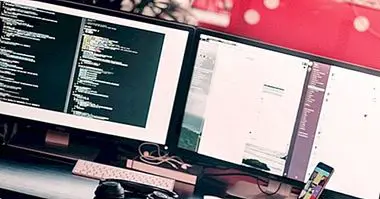How to help children control sphincters
Sphincter control occurs when the urination and defecation behaviors stop being reflex behavior to become a voluntary and automatic behavior. It is estimated that the average age to achieve sphincter control is between two and three years.
When these ages begin to approach and boys and girls still can not control their sphincters, situations of tension are usually created in which the caregivers begin to worry; which can cause more stress in the children and significantly hinder the process.
In this article we will review several tips that can be useful to help children control sphincters .
- Related article: "The 6 stages of childhood (physical and psychic development)"
What is sphincter control?
Specifically the sphincter control it's about mastering a muscle that is ring-shaped at will and that closes or opens ducts in the body to allow us to discard some substances.
Getting to control the sphincters that are inside the anus and urethra is one of the behaviors that allow us socialization. It is also a process that involves many factors, among which is the age, maturity and development of the child , as well as environmental factors that can both favor the process and make it more difficult.
We say that a boy or girl has not acquired sphincter control when he is at a certain age or has had some social demands (such as going to school), and continues to wet or stain clothing or diaper, during the day and / or overnight.
Why do some children achieve sphincter control before others?
In principle you have to remember that, Although we have found certain patterns of behavior and child development, these guidelines are not definitive : there is a great diversity in terms of the processes we go through as human beings.
That is, it is completely normal for some boys or girls to achieve some behaviors before others, and if we want to specifically favor sphincter control we should start by taking it easy.
As we have seen, this is a process that depends on several things. Situations that produce tension, stress and anxiety they are one of the factors that interfere in an important way. These stressful situations are generally strong changes, which can cause tension because at a young age it is difficult for children to recognize the rules of a new place and what they are expected to do.
Some examples of these changes are the arrival of a new sibling, starting a new school, the loss of a loved one and even a pet, among other similar events, and even parenting styles that tend to overprotection; although not all children react in the same way to any of these examples.
On the other hand, a boy or a girl may take longer to control potty training if she has any developmental condition that causes voluntary behaviors to be achieved at a different speed. Likewise, the process can be influenced by infections or muscle pressure.
- Maybe you're interested: "Educating to form independent and autonomous children"
Tips to help children control sphincters
There are many ways to favor it, and sometimes it is much better to consult directly with a specialist who can guide caregivers and accompany the stressful situations that the little ones may be going through. Some of the most common strategies are the ones we review below:
1. Encourage behaviors and habits related to self-care
Besides being a behavior, sphincter control is a habit that means take a step from dependence to independence ; which in turn is accompanied by other habits that also allow socialization (such as dressing alone, brushing teeth, showering, communicating, etc.).
Therefore, if we intend to stimulate sphincter control, it is also useful to encourage other habits related to independence and self-care.
2. Modeling and preparing the conditions of space
Modeling is one of the most popular strategies in cognitive-behavioral psychology and basically consists of serving as a model to another person, to help him acquire a behavior. In this sense, you have to teach the child how and where to urinate and defecate . This can be done directly by adults, but we can also rely on teaching materials, such as stories.
It is also important to ensure that children have a space conditioned to their size, and put clothes that can be removed easily.From there it is useful to invite them little by little to sit in the potty at specific times (right after meals, when waking up or before going to sleep); as well as make them participants in their own diaper change (For example, ask them to take clean diapers, wet towels, clothes, etc.).
- Related article: "Modeling: what is it and what are its types in Psychology?"
3. Do not press
It is necessary to keep in mind that children have different rhythms and that they assimilate situations in different ways. Transmitting calmness and calmness is one of the most effective methods .
It is common that when the process begins incontinence periods occur, in which it is necessary to avoid scolding them. In the same sense we must bear in mind that they can first acquire control of the day sphincter, so we must be patient if during the night the process is slower.
In the same way avoid comparisons like "your brother controlled much before" , or phrases like "you are a meón", since this generates anguish and delays the process even more. If what we want is that they feel responsible about their own hygiene, it is not necessary to scold them or punish them, we can do it in other ways.
For example, encouraging self-care and self-responsibility by teaching them to wash some garment, or to deposit it themselves in the washing machine (or whatever corresponds according to the conditions or lifestyles of each person). In any case, be understanding, transmit confidence and accompany them.
4. Use a logbook
Especially in the cases of children who for reasons of physiological development need more support to achieve sphincter control, It is very useful to keep a daily log where we record the hours at which the child urinates and defecates.
Keeping this record daily and in the weeks prior to the beginning of a special training program is very useful because it allows us to know the rhythms of the child, and in this way anticipate and accompany the process.
5. Start a formal training program
In some cases it is necessary to take a formal training program , which can start by removing the diaper, and putting it on for half an hour after urinating or defecating (which is anticipated through the binnacle we explained earlier).
Then try to keep the diaper on for one or two hours, and take it off again. This training requires above all a lot of patience and a lot of order on the part of the caregivers; especially if it is a child who has learning rhythms or adaptive behaviors that are considerably different from the rhythms we see in other children.
In this case it is especially advisable to seek a formal orientation, because the training varies according to the characteristics of the child and those in charge of their care.
6. Ensuring that children have the basic knowledge
Before starting a training program and before inviting them to use the potty, It is important to know if they have basic body knowledge , that is, if they have acquired notions related to the body scheme (for example, up, down, front, back).
We must also encourage the recognition of key words such as toilet, diaper, dirty, clean, pee, urine, feces, urine, or those in their immediate context.
7. Help you recognize when you are achieving
It consists of the child associating voluntary behavior (toilet training) with a pleasant and pleasant feeling . For this it is important to congratulate him or show him that we are happy and happy that he has managed to use the potty properly.
The reward may be different for each child, but, in any case, it is important not to fall into exaggeration. Especially we must avoid that the child ends up associating the habit of going to the bathroom with material rewards (because they are rewards that surely we can not sustain in the long term and that could generate other complications later).



















